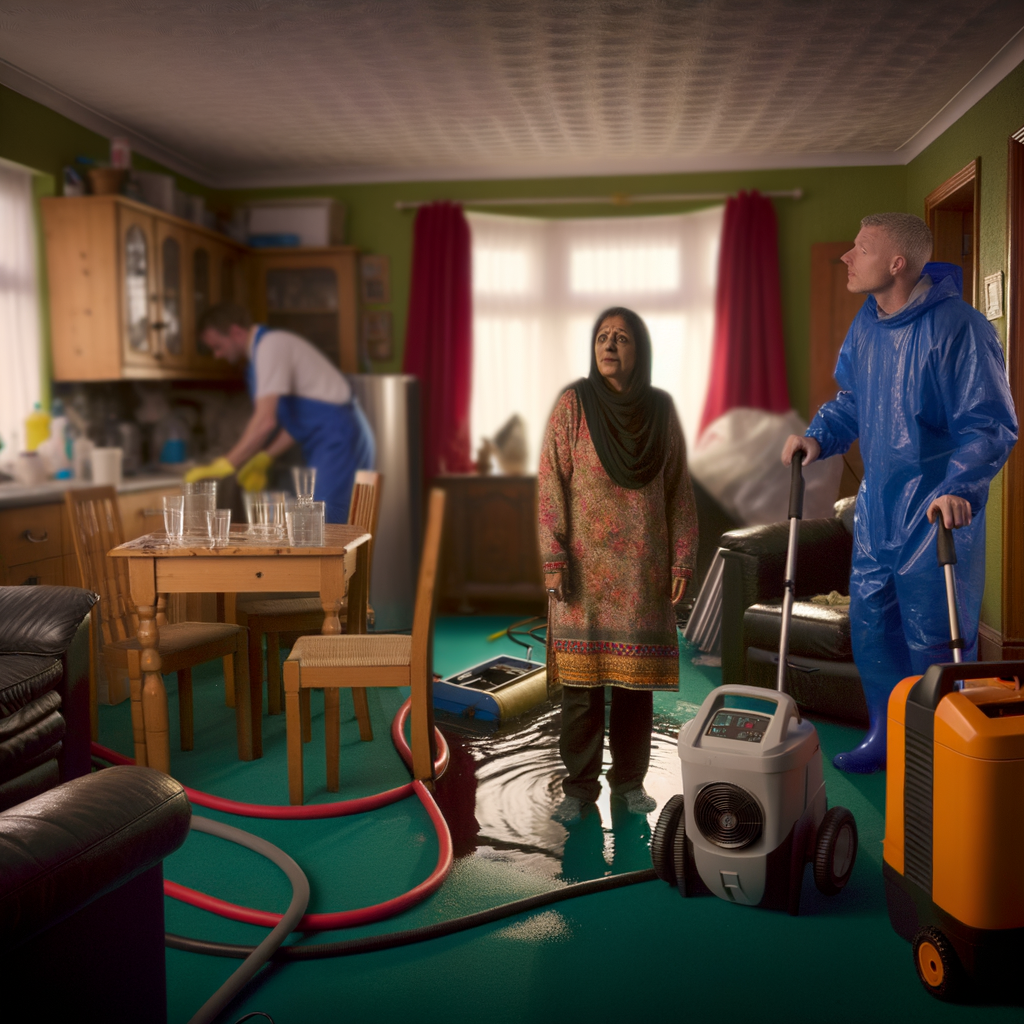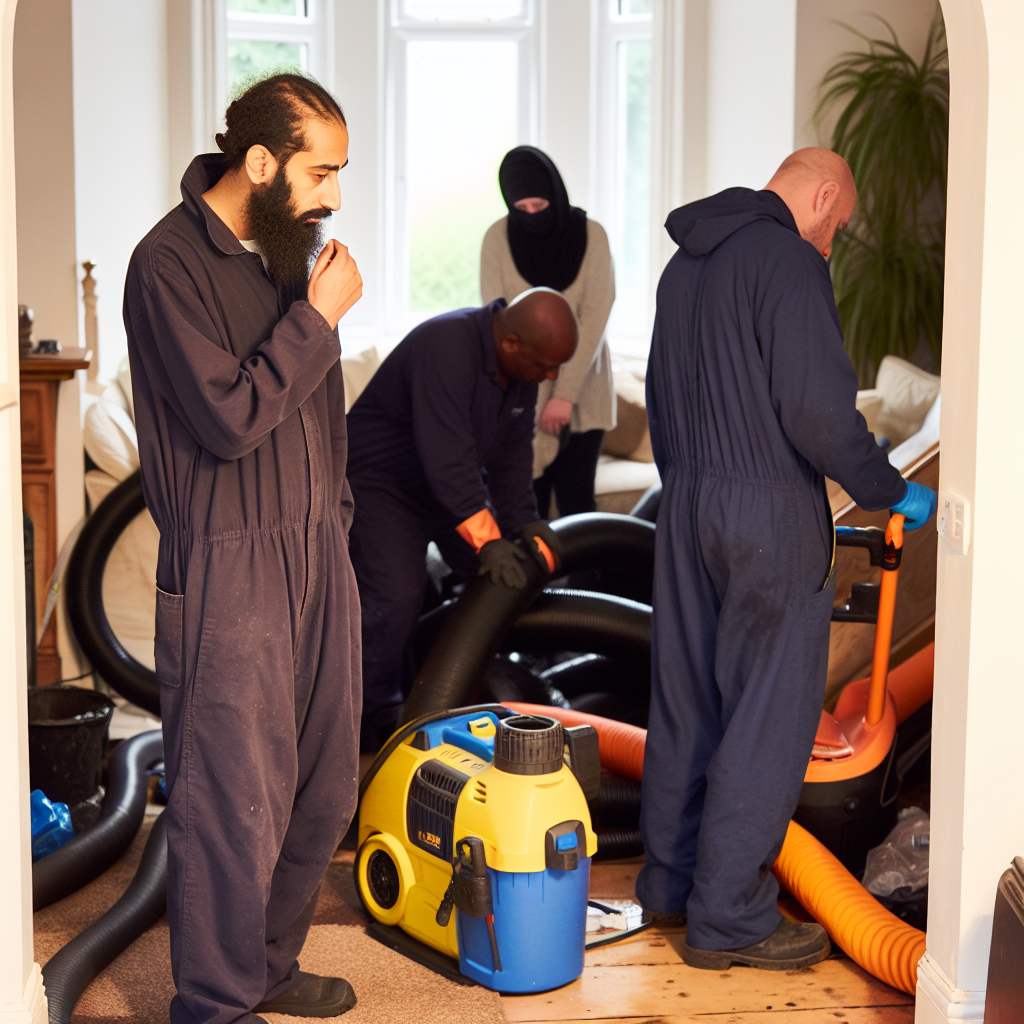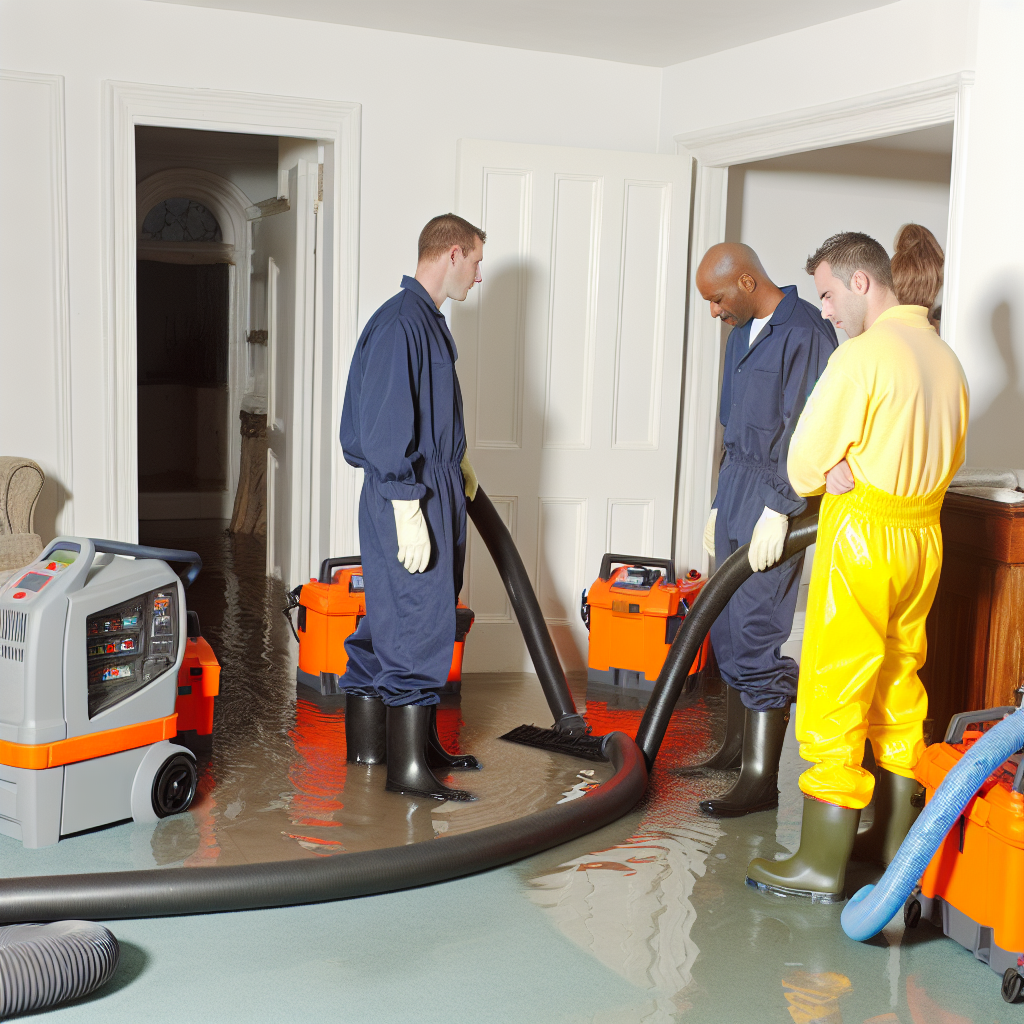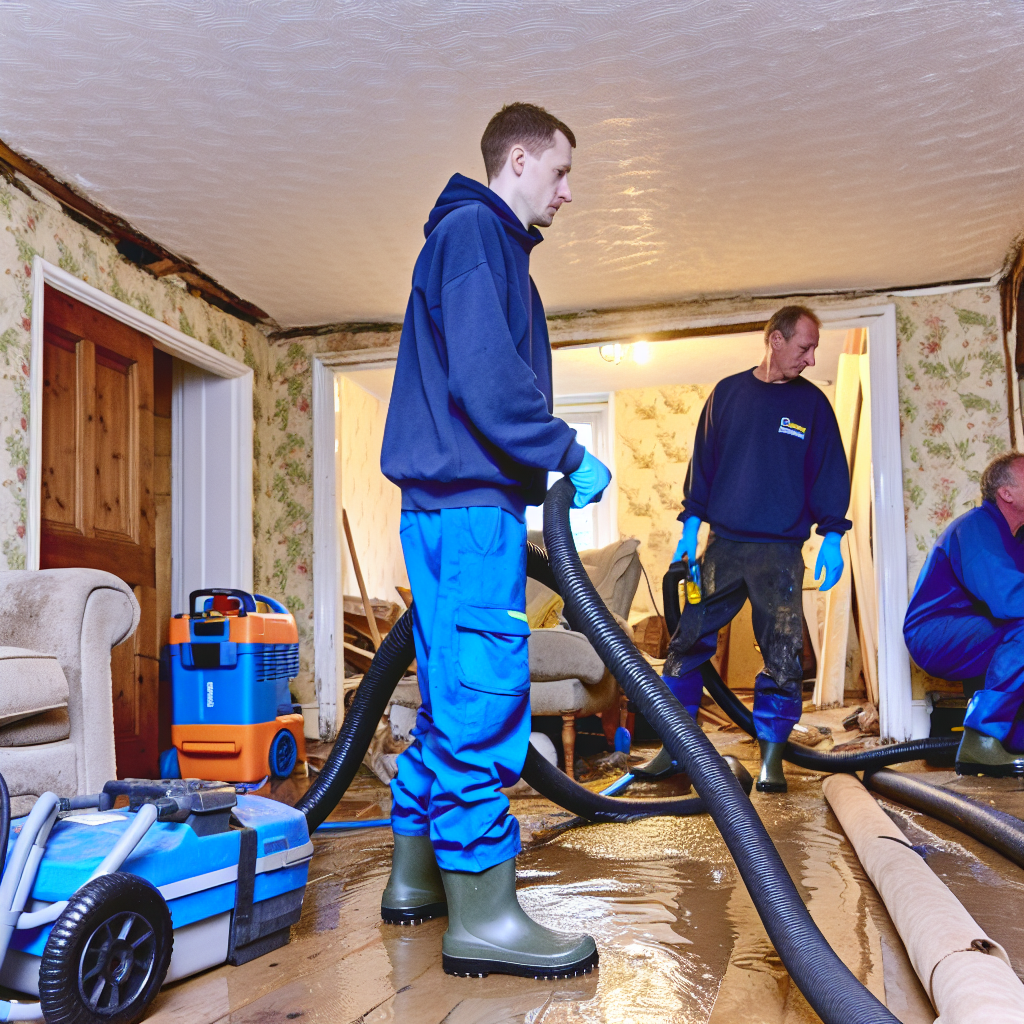A Comprehensive Guide to Efficient Flood Damage Cleanup and Restoration for UK Property Owners: Health, Safety, Insurance, and the Latest Techniques
Introduction
Cleanup and restoration after a flood can be overwhelming for any property owner. The importance of this process extends beyond material damage – it also involves potential health risks, insurance claims, and adhering to specific guidelines. This comprehensive guide aims to provide UK property owners with a thorough understanding of efficient flood damage cleanup and restoration, highlighting health, safety, insurance, and the latest techniques in the sector. Each step is crucial in restoring both property and peace of mind. Let’s navigate these tumultuous waters together.
Table of Contents
- Understanding the Impact of Flood Damage
- Health and Safety Tips During Flood Cleanup
- Navigating Insurance Claims after a Flood
- Embracing the Latest Flood Restoration Techniques
- Frequently Asked Questions
Understanding the Impact of Flood Damage
In 2020, The UK’s Environment Agency stated that 5.2 million properties in England were at risk from flooding, emphasizing the need for accurate flood damage awareness and restoration knowledge[1]. People often underestimate the extent of flood damage, which is not confined to just material loss but also includes soil contamination, structural instability, and the growth of harmful mould. Expert advice from restoration professionals, such as John Davis from the Restoration Industry Association, indicates that immediate action is necessary to prevent long term damage to the property[2].
Health and Safety Tips During Flood Cleanup
One of the overlooked aspects of post-flooding situations is the potential health risks involved during cleanup, including electrocution, injuries from uncovered debris, and exposure to contaminated water. According to the UK’s Health and Safety Executive, wearing appropriate Personal Protective Equipment (PPE) during cleanup, including waterproof boots and gloves, is essential[3]. They also emphasize that having a qualified electrician do an electrical check before starting cleanup can prevent potential electrocution hazards.
Navigating Insurance Claims after a Flood
Understanding your property insurance and efficiently navigating the claim process can heavily influence the financial recovery from a flood. Following a predefined claim procedure provided by insurance firms, documenting every damage and cleanup expense can expedite the claim approval[4]. It’s crucial to communicate effectively with insurance companies and use a professional restoration service that can provide comprehensive documentation of all the restoration work.
Embracing the Latest Flood Restoration Techniques
The field of flood restoration is continually updating with new techniques and technologies. Infrared cameras and hygrometers have become standard equipment for any professional restoration service, allowing accurate moisture detection and ensuring effective drying[5]. Embracing these new techniques can pave the way for more efficient recovery from flood damage.
Frequently Asked Questions
What are the health risks involved in flood cleanup?
What are the initial steps to take after a flood?
How to accurately document damage for insurance claims?
What are the potential structural hazards after a flood?
How can the latest restoration technology help in flood recovery?
Conclusion
Flood damage cleanup and restoration can be a daunting task, but with the right knowledge, techniques, and professional help, property owners can efficiently handle this tough situation. Health and safety, understanding insurance claims, and employing the latest restoration techniques are the pillars of flood damage restoration that everyone should be aware of. It’s about reclaiming not just your property, but also your peace of mind. Stay safe, stay informed.
References
[1] Environment Agency. (2020). “Properties in England at flood risk”. Link
[2] John Davis. (2018). “Importance of Immediate Flood Restoration”. Restoration Industry Association. Link
[3] Health and Safety Executive. (2021). “Flood Cleanup Guidelines”. Link
[4] Association of British Insurers. (2019). “Navigating Flood Insurance Claims”. Link
[5] Insurance Institute for Business & Home Safety (2021). “Modern Flood Restoration Techniques”. Link




